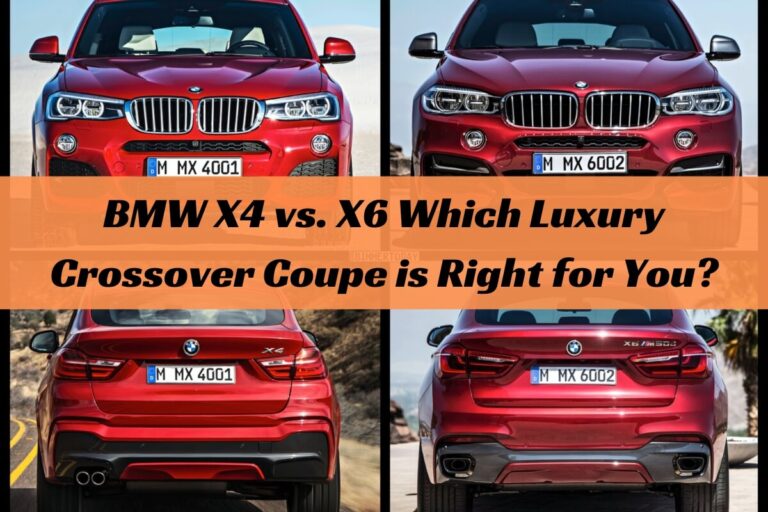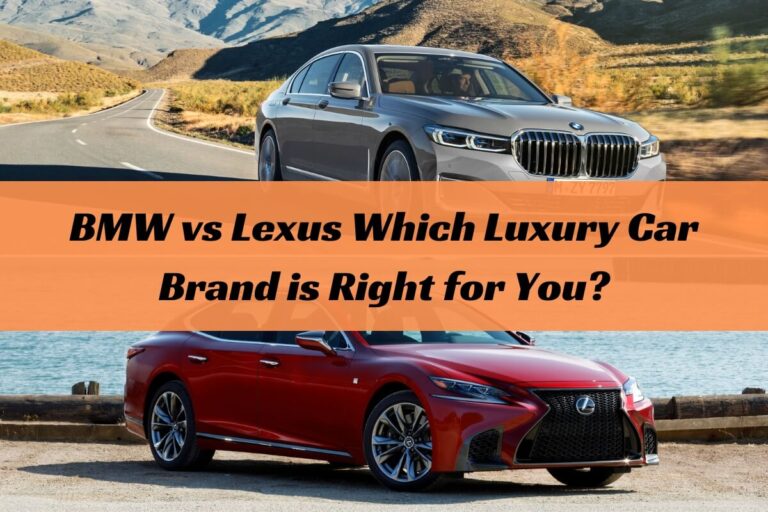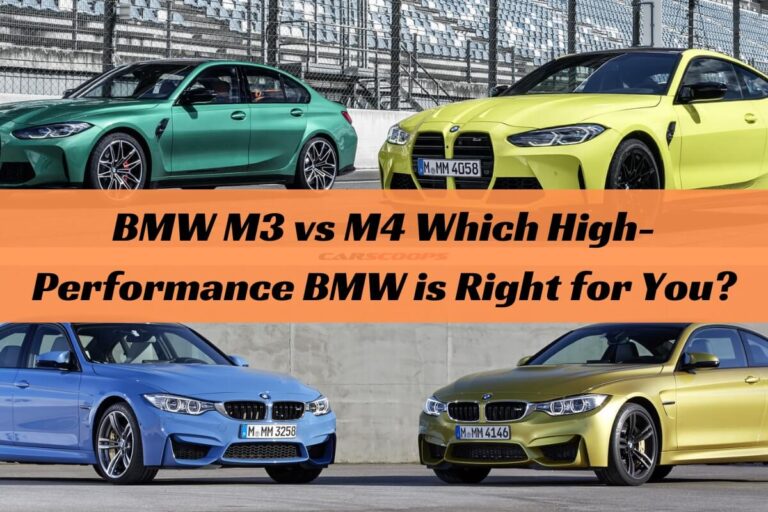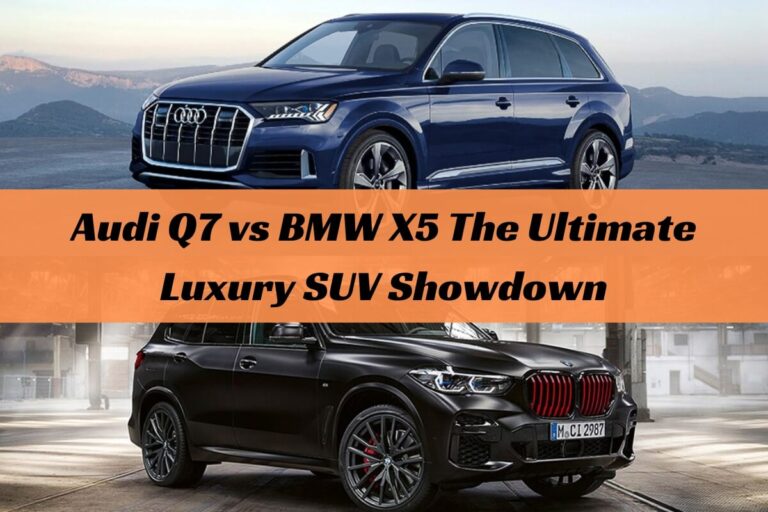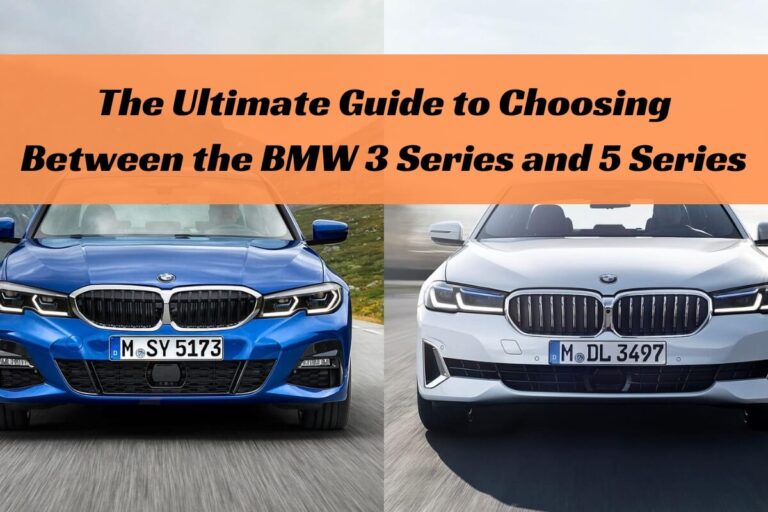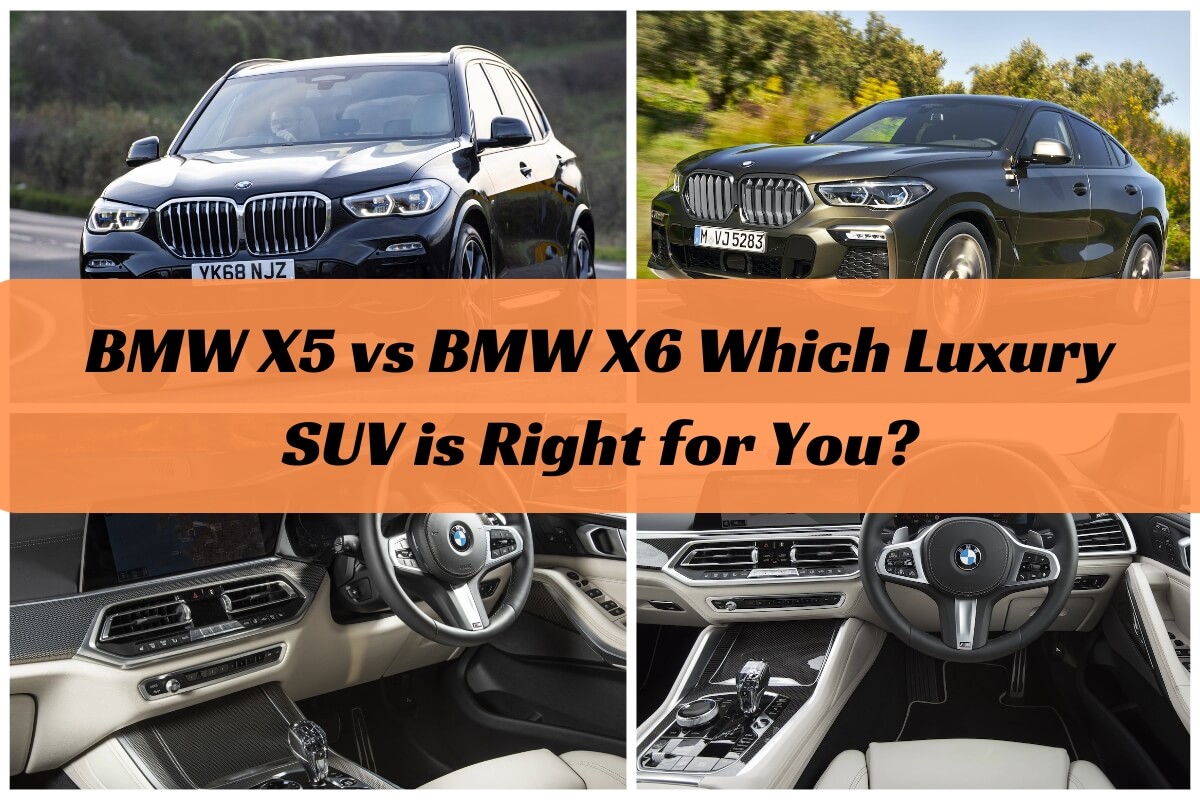
BMW’s X5 and X6 are two of the most popular and sought-after luxury SUVs on the market, offering a perfect blend of performance, style, and premium features. While these two models share many similarities, they also have distinct differences that cater to different preferences and needs. The question that arises for many shoppers is: Which one should I choose – the BMW X5 or the BMW X6?
The short answer is: The BMW X5 is the more practical choice, offering more interior space and cargo capacity, while the BMW X6 prioritizes style and sportiness with its coupe-like design.
The BMW X5 and X6 share a platform, but they cater to different needs. This comparison highlights their differences in design, performance, tech, and costs. We’ll explore how they stack up, helping you decide which one fits your lifestyle and preferences.
Design and Styling: The X6’s Coupe-Like Flair vs. The X5’s Traditional Elegance
When it comes to design and styling, the BMW X5 and X6 take two distinct approaches. The X5 embraces a more traditional SUV design, exuding sophistication and practicality. Its sleek lines and muscular stance give it a commanding presence on the road, while its elegant interior offers a comfortable and spacious cabin for passengers.
On the other hand, the BMW X6 is a true head-turner with its coupe-inspired body style. Its sloping roofline and athletic silhouette create a sportier and more dynamic appearance, sacrificing some interior space for a more aggressive and stylish look. The X6’s interior is equally impressive, with a driver-focused cockpit and premium materials that ooze luxury.
In terms of dimensions, the X5 is slightly larger than the X6, measuring 194.3 inches in length, 78.9 inches in width, and 69.1 inches in height. The X6, on the other hand, is 195 inches long, 78.9 inches wide, and 66.9 inches tall. This difference in height contributes to the X6’s sleeker profile and lower roofline.
Performance and Handling: Unleashing the Power of BMW’s SUVs
Both the BMW X5 and X6 offer a range of powerful engine options, ensuring an exhilarating driving experience. The base models come equipped with a 3.0-liter turbocharged inline-six engine that delivers 335 horsepower and 330 lb-ft of torque. For those seeking even more power, there are higher-performance variants available, such as the X5 M50i and X6 M50i, which boast a twin-turbocharged 4.4-liter V8 engine that produces a whopping 523 horsepower and 553 lb-ft of torque.
While the X5 and X6 share similar engine options, their handling characteristics differ slightly due to their varying designs. The X5, with its more traditional SUV stance and higher ride height, offers a more comfortable and composed ride, making it an excellent choice for long-distance travel or family adventures. On the other hand, the X6’s lower center of gravity and sportier suspension tuning result in more responsive and agile handling, appealing to drivers who prioritize a more dynamic driving experience.
Both models are available with BMW’s xDrive all-wheel-drive system, which enhances traction and stability in various driving conditions. Additionally, several performance-oriented features, such as adaptive suspension and dynamic stability control, are available to further enhance the driving dynamics of both the X5 and X6.
Technology and Infotainment: Staying Connected and Entertained
When it comes to technology and infotainment, the BMW X5 and X6 are at the forefront of innovation. Both models feature BMW’s latest iDrive infotainment system, which is displayed on a large, high-resolution touchscreen. This system offers seamless integration with Apple CarPlay and Android Auto, allowing you to access your favorite apps and music with ease.
In addition to the infotainment system, the X5 and X6 are equipped with a host of advanced driver assistance and safety technologies. These include features such as lane departure warning, forward collision warning, automatic emergency braking, and a surround-view camera system, ensuring a safe and confident driving experience.
For audiophiles, both models offer premium sound systems from renowned brands like Bowers & Wilkins and Harman Kardon, providing an immersive audio experience for all occupants. Wireless charging pads and USB ports are also available, ensuring that your devices stay charged and connected throughout your journey.
Fuel Efficiency and Running Costs: Balancing Performance and Practicality
While fuel efficiency may not be the primary concern for buyers in this segment, it’s still an important factor to consider when evaluating the overall running costs of the BMW X5 and X6. Both models offer a range of engine options, including turbocharged gasoline and diesel variants, as well as a plug-in hybrid electric vehicle (PHEV) option for the X5.
The X5 PHEV, known as the xDrive45e, combines a 3.0-liter turbocharged inline-six engine with an electric motor, delivering an impressive combined fuel economy rating of up to 50 MPGe (miles per gallon equivalent). This hybrid powertrain not only improves fuel efficiency but also reduces emissions, making it a more environmentally friendly choice.
For the gasoline-powered models, the X5 and X6 offer similar fuel economy figures, with the base 3.0-liter turbocharged inline-six engines achieving an EPA-estimated combined fuel economy of around 24 mpg. The higher-performance V8 models, while exhilarating to drive, can be expected to have lower fuel efficiency ratings.
When it comes to long-term ownership costs, factors such as maintenance, insurance, and depreciation should also be considered. BMW’s renowned engineering and build quality can help mitigate some of these costs, but it’s essential to factor in these expenses when budgeting for either the X5 or X6.
Frequently Asked Questions About the BMW X5 and X6
What are the key differences between the X5 and X6 in terms of practicality and cargo space?
The BMW X5 offers more interior space and cargo capacity compared to the X6. The X5 has a larger rear cargo area and the option for third-row seating, making it a more practical choice for families or those who need extra space for hauling cargo.
How do the prices and trim levels compare between the two models?
The BMW X6 typically carries a higher price tag than the X5 due to its more specialized design and sportier positioning. However, both models offer a range of trim levels and options, allowing buyers to customize their vehicle to their preferences and budget.
Which model offers better off-road capabilities or all-terrain performance?
While both the X5 and X6 are primarily designed for on-road use, the X5’s higher ground clearance and more traditional SUV stance may give it a slight advantage in light off-road situations. However, neither model is intended for serious off-road exploration.
Are there any significant differences in terms of reliability and maintenance between the X5 and X6?
As both the X5 and X6 are built on similar platforms and share many components, their reliability and maintenance requirements are generally comparable. However, it’s always recommended to follow the manufacturer’s recommended maintenance schedules and use authorized service centers for the best long-term ownership experience.
Can the X5 or X6 be configured with a third-row seating option?
Yes, the BMW X5 can be optioned with a third-row seat, increasing its seating capacity to seven passengers. However, the X6’s coupe-like design does not accommodate a third-row option, limiting its seating capacity to five passengers.
In conclusion,
Both the BMW X5 and X6 are exceptional luxury SUVs that offer a perfect blend of performance, style, and premium features. The X5 is the more practical choice, offering more interior space and cargo capacity, while the X6 prioritizes style and sportiness with its coupe-like design. Ultimately, the decision between these two models comes down to individual preferences and lifestyle needs.

